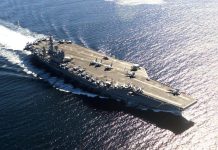Uzbekistan is looking to update its older Soviet-era fighter jets. It is considering two options: the French-made Dassault Rafale and the Chinese Chengdu J-10C.
This potential shift away from Russian military hardware indicates Uzbekistan’s interest in establishing new defense ties with other countries.
A major development came in November 2023, when French President Emmanuel Macron visited Uzbekistan. During his visit, the two countries reportedly discussed a potential deal for 24 Rafale fighter jets.
At the same time, there are reports that Uzbekistan is seriously exploring the Chinese J-10C. This jet, manufactured by Chengdu Aerospace Corporation, is a modern multi-role fighter equipped with advanced electronics and weapons.
The J-10C is appealing for several reasons. It costs less than most Western jets, boasts decent capabilities, and integrates well with Chinese-made defense systems already in use by Uzbekistan.
Rafale vs J-10C
Both the Rafale and the J-10C are modern fighter jets. They come with strong electronics, sensors, and systems that help detect and engage enemy targets. Both can carry a wide range of weapons, including missiles for air-to-air and air-to-ground combat, as well as bombs.
The Rafale utilizes the Thales RBE2 radar, renowned for its long range and ability to simultaneously track multiple targets. The J-10C features the Chinese-made Type 1475 AESA radar, although details about its performance are not publicly known.

Both jets utilize “sensor fusion,” which means they combine information from different sources, such as radar and infrared sensors, to provide the pilot with a clear picture of the battlefield. The Rafale is generally considered to have more advanced sensor fusion.
In electronic warfare, the Rafale has the well-regarded SPECTRA system, which protects the jet by jamming enemy radars and guiding it away from missiles. The J-10C has a similar system, but it is not considered as advanced.
Both aircraft can share information securely with other units. While the Rafale’s communication system is widely tested and proven, less is known about how the J-10C performs in this area.
Air Marshal Anil Chopra (retired), a former IAF test pilot, says that comparing the J-10C and Rafale is “somewhat unfair.” According to him, the Rafale is a twin-engine, battle-proven aircraft with superior electronic warfare capabilities.
“The J-10 and the Rafale can both be considered 4.5-generation multirole fighter jets with similar performance in some areas. But the Rafale is ahead in terms of technology, weapons, engines, and combat experience,” Chopra said.
Weapons And Performance
The Rafale can carry a wide range of missiles. These include the MICA for short to medium-range air battles, the Meteor for long-range air-to-air combat, and the SCALP for precise attacks on ground targets.
The J-10C also carries capable missiles, such as the PL-8, PL-10, PL-12, SD-10A, and the long-range PL-15, which is similar in range to the Rafale’s Meteor.
For close combat, the Rafale has a powerful 30mm cannon that fires 2,500 rounds per minute. The J-10C features a 23mm cannon, which remains effective but less powerful.
The J-10C has a top speed of Mach 2.2 and a range of about 2,940 km. The Rafale is slightly slower at Mach 1.8, but it can fly up to 3,700 km, making it better suited for various missions.
In air-to-air combat, the Rafale stands out for its radar and targeting systems. Its Meteor missile can hit targets up to 150 km away. The J-10C’s PL-15 missile is claimed to have a range of over 145 km.
Both jets are also equipped for air-to-ground missions. The Rafale’s SCALP cruise missile can hit targets over 250 km away. The J-10C can carry guided bombs and missiles, but lacks the long range.
The Rafale has done better in the global market. Countries such as India, Egypt, and Qatar have purchased it, and many others are awaiting delivery. In contrast, the J-10C has attracted fewer foreign buyers, Pakistan being the main one.
Will Uzbekistan Choose The J-10C?
Uzbekistan’s turn toward Chinese military equipment comes as it reassesses its long-standing defense relationships.
For years, Russia has been the primary supplier of arms to Central Asia. Uzbekistan’s air force, built on Soviet-era systems, remained dependent on Moscow for spare parts and technical assistance well into the 2000s.
That equation is changing. Russia’s ability to deliver new systems has been hit by Western sanctions over the war in Ukraine, as well as delays in production.
China offers an alternative. Its fighter jets are cheaper, more readily available, and usually sold without political conditions. Beijing focuses on economic partnerships rather than strategic alignment, which suits Uzbekistan’s approach.
The J-10C reflects that strategy. At US$40–50 million per unit, it is far more affordable than the French Rafale, which can cost more than twice as much. The Chinese jet offers solid capabilities and is compatible with the systems Uzbekistan already uses.
For a country with a limited defense budget, this makes sense. The J-10C enables Uzbekistan to upgrade its air force without incurring unsustainable costs. Its maintenance needs are also simpler and less expensive than Western jets—an important consideration for air forces with limited resources.
Another factor in China’s favor is the lack of political strings. Chinese arms deals are typically more flexible, giving Uzbekistan greater room to make its own defense decisions without outside pressure.
- Via: ET News Desk
- Mail us at: editor (at) eurasiantimes.com




